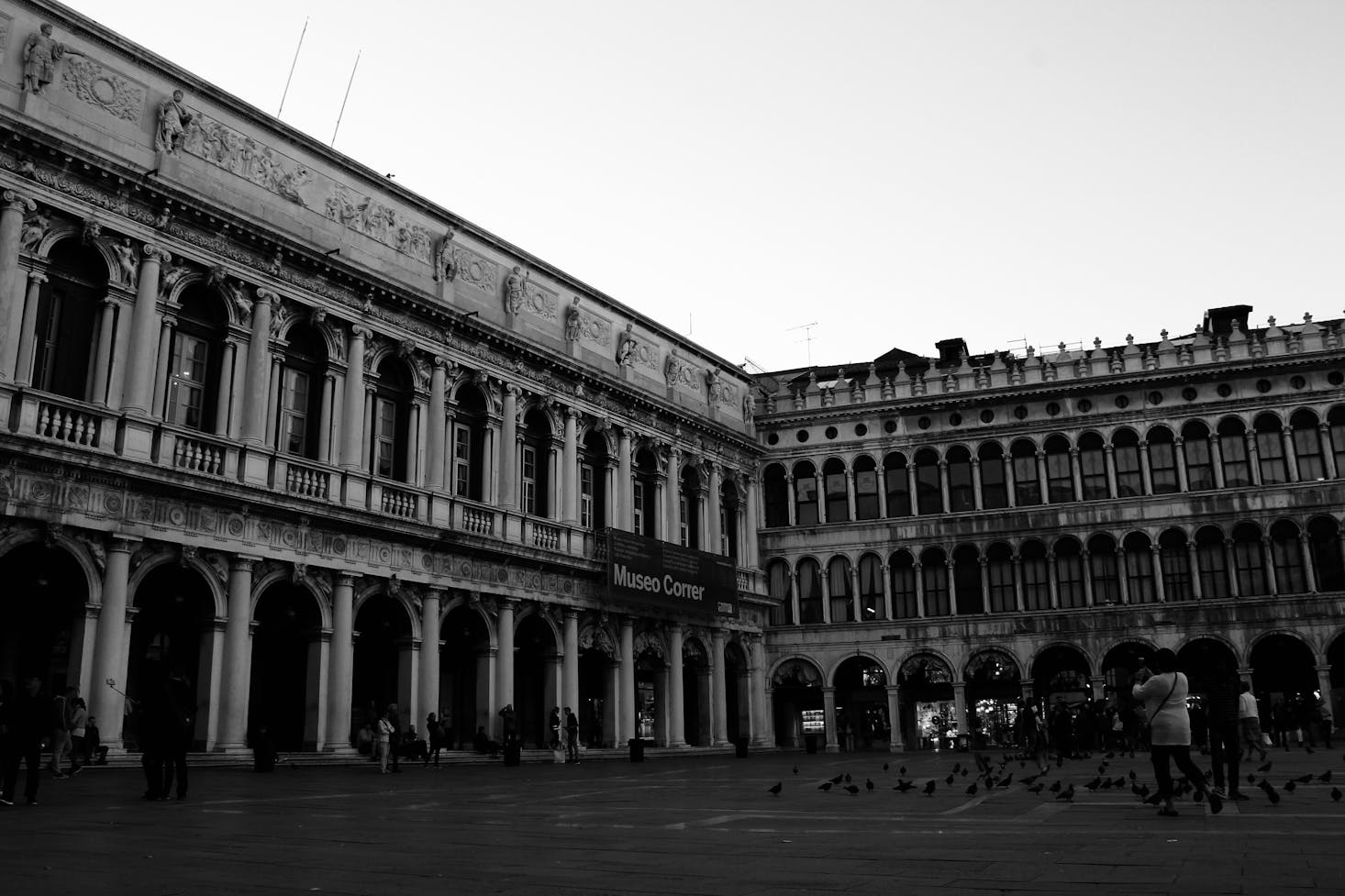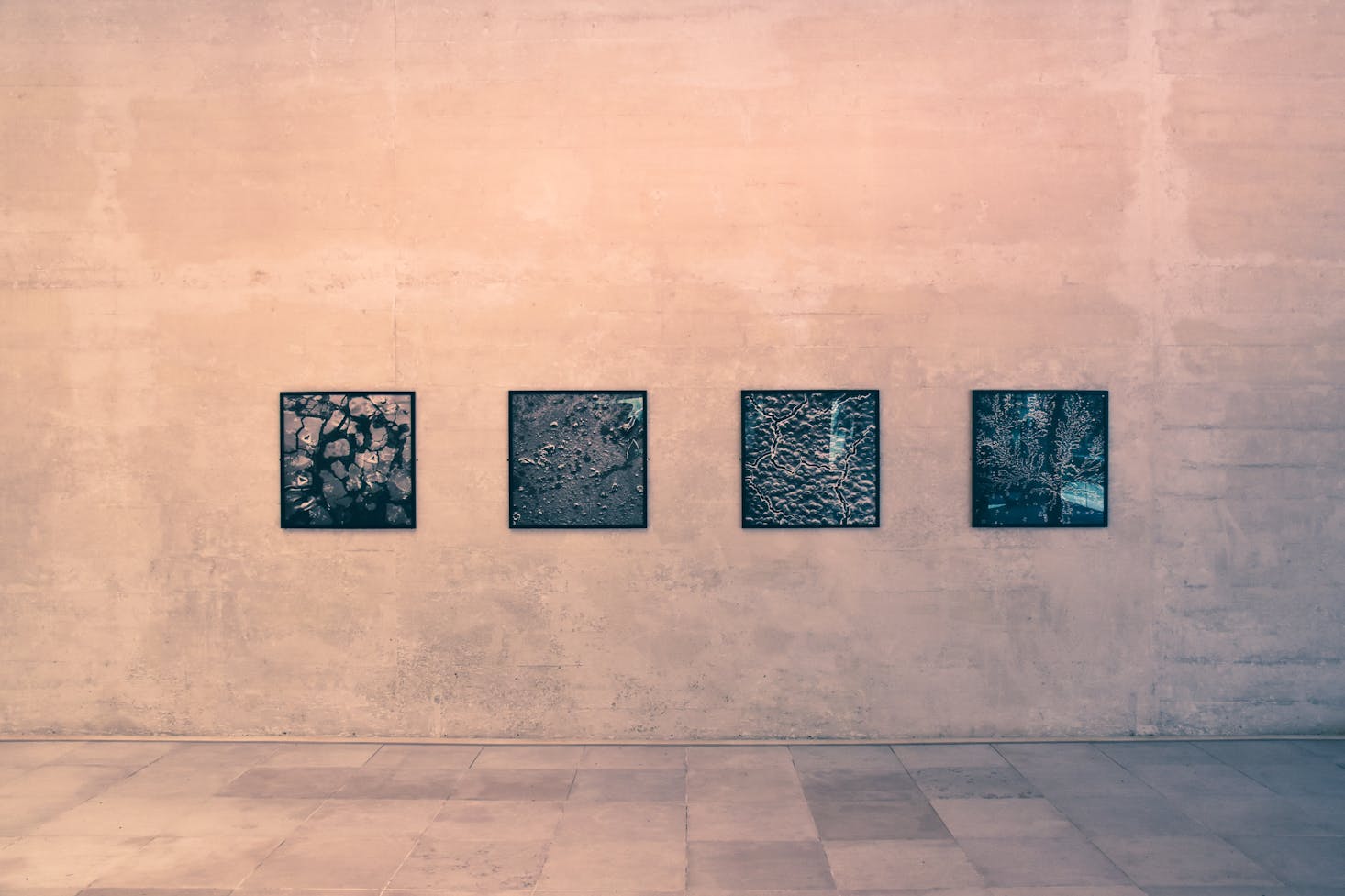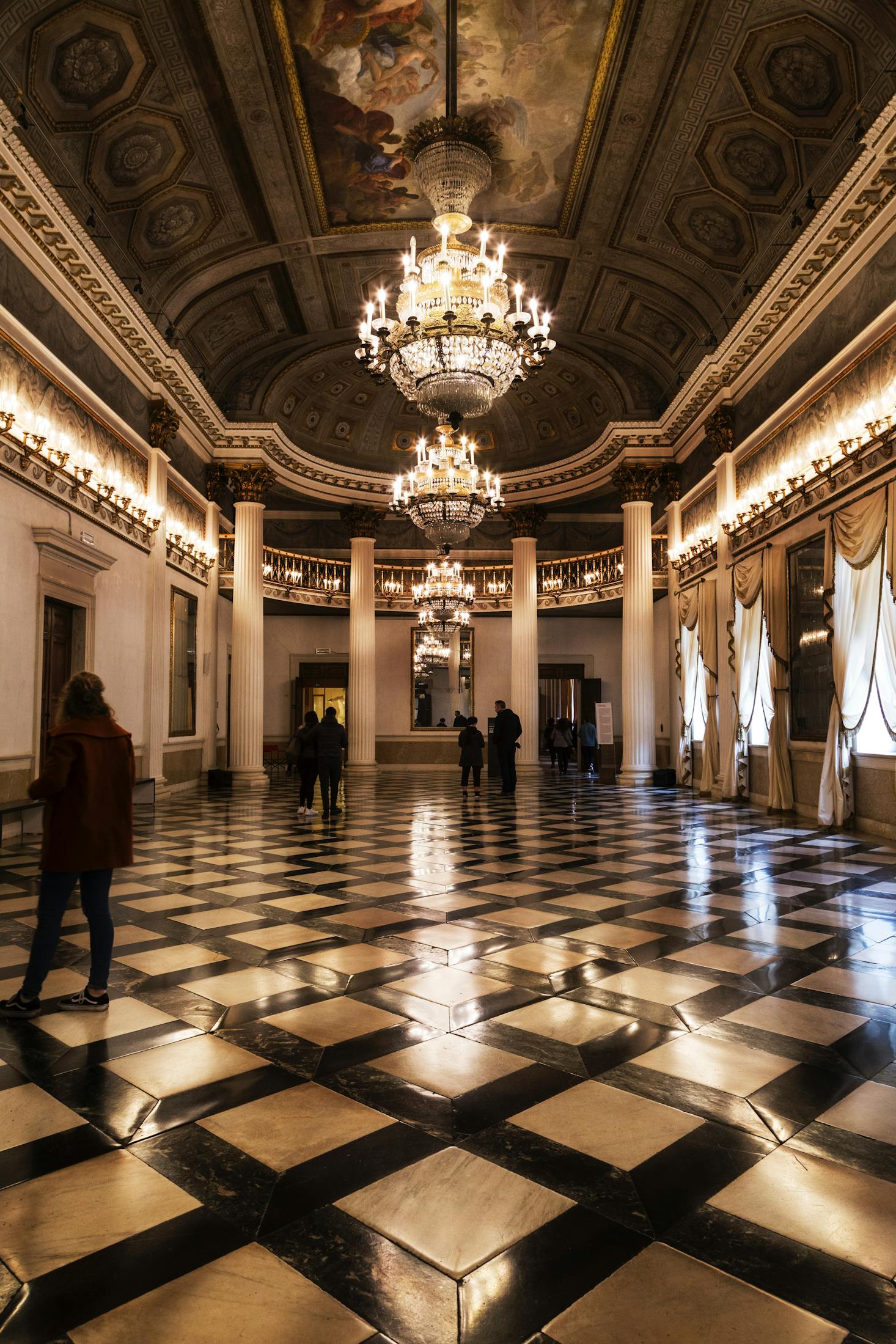The 10 Best Museums In Venice

Capital of the Veneto region, Venice is an Italian city that almost everyone knows in one way or another. Other than its abundant history, Venice's most defining feature has to be the canals. Thinking of Venice conjures up an image of a black and white striped gondolier navigating the canals while singing. Venice has so many things to do that it's really tricky to fit it all in. From the Basilica San Marco and the Rialto Bridge to the Vaporetto rides and stunning architecture, it will take some planning to make the most of your time here.
With all its history and a picturesque setting, it's no surprise that Venice has a ton of museums full of artifacts, paintings, and sculptures that are marvels both inside and out. Some of the appeal of the collection of Venice Civic Museums has to be in the buildings themselves. Palaces are converted into restored art galleries showcasing the opulence of time gone by.
The core of the city is easily accessible from the Venice train station and your first stop should be the majestic Piazza San Marco. With many museums, restaurants, and both locals and tourists, the square is often very busy and the walkways to it are narrow. Do yourself a favor, and before you head out on your Venetian adventure, drop your bags at a Bounce luggage storage in Venice. It's so much easier to navigate the streets without a heavy suitcase or backpack.
Get $5 off with the Bounce app
Use Bounce to find nearby bag storage in 4,000+ cities worldwide.
Get the app

Archaeological Museum
Established in 1523, Venice's Archaeological Museum is located in the heart of Venice. Just off St. Mark's Square and steps from the Grand Canal, it's a museum dedicated to the preservation of artifacts and sculptures donated throughout the years. Aside from art collections donated by prominent Venetian families, this museum houses jewels, coins, and ceramics from Greece as well as Egyptian and Babylonian antiquities. Some of the highlights of any visit include Roman busts, sarcophagi sections, and too many sculptures to mention.
As you tour the Archaeological Museum, try to look up. Many ceilings in the individual rooms are skillfully painted and embellished. They are works of art themselves. Whether you're an avid fan of archaeology, a history fanatic, or have a passing interest, something at this museum is bound to draw your eye.
Doge's Palace
Doge's Palace, once a residence, is now an unmissable museum in Venice's Piazza San Marco. The building itself anchors the square and has intricate gothic-style detailing. Although you could spend ages admiring the lavish exterior of the building with patterned bricks, portico, and balcony, head inside for a taste of the good life. The interior decoration is ornate from the awe-inspiring staircases to the frescoed walls and impressive gilded ceilings. It's almost hard to believe that someone actually lived surrounded by such elegance.
This museum is one of many civic museums in Venice also known as Palazzo Ducale. Inside, it houses the Museo dell'Opera with remnants of the building's architecture from the countless iterations it has endured due to insufficient construction, fires, and floods. A total of 42 capitals are on display along with their columns for you to peruse. You can also tour the building's prisons and the Doge's apartments, which contain a collection of paintings and ooze opulence. The prisons are often fascinating for children, and luckily, there are a bunch of things to do with kids in Venice other than the Doge's Palace.
Correr Museum
Also in the museum-centric Piazza San Marco, the Museo Correr focuses on the history and art of Venice. Named for a generous aristocratic donor, Theodoro Correr, the Correr Museum is probably most famous for its collection of sculptures by Antonio Canova. The Neoclassical Rooms, part of the Napoleonic Wing, house Canova's sculptures. This wing was a palace for emperors and kings in the 19th century.
The Imperial Rooms offer a glimpse into the lives of the palace's residents. You can view everything from the weekday lunch dining room to the Empress' bathroom, study, and boudoir. The museum's first floor exhibits insights into life in the Venetian Republic through the years.

Museo del Merletto
A little outside the Venice core, the Museo del Merletto is a crafter's paradise. It's a museum dedicated to everything to do with lace. Stop by and tour the exhibits of intricate lacework through the centuries. From the 16th century to the 20th century, see how trends and techniques have evolved. When the Lace Museum is open, you can watch lacework demonstrations by their skilled craftspeople.
A visit to the Lace Museum ties in well with a tour around Murano Island. This colorful neighborhood is accessible by the ferry and just far enough off the beaten path to be a quiet refuge from the hoards of Venice tourists.
Peggy Guggenheim Collection
Overflowing with 20th-century modern art, the Peggy Guggenheim Collection sits in an 18th-century palazzo right on the Grand Canal. The core exhibits here are the works in Peggy Guggenheim's personal collection and feature examples of cubism, abstract impressionism, and surrealism. Traveling through Europe often exposes tourists to ancient art and artifacts as well as Italy's well-known artists like Michelangelo and Caravaggio. The modern art showcased at the Peggy Guggenheim Collection is a sharp contrast to these 16th-century artists. The colors are vibrant and parts of the collection verge on magic and whimsy.
This collection is one of the most visited museums in Venice, so purchasing tickets in advance online is a good idea. This museum combines well with a visit to the nearby Basilica di Santa Maria della Salute.
Ca' Pesaro - International Gallery of Modern Art
While Venice is steeped in history from its buildings to museums to piazzas, it's also home to more modern art than you might think. For art lovers with a penchant for more recent works, the International Gallery of Modern Art is a must-visit along with the Peggy Guggenheim Collection.
Ca' Pesaro is a palace on the Grand Canal that houses a 19th and 20th-century modern art collection. The building is Baroque-style and is another one of the Venice civic museums. Expect to be dazzled by famous works from Auguste Rodin and Gustave Klimt. The modern art museum also features works by Italian artists from Medardo Rosso's sculptures to Giacomo Balla's paintings with a focus on the Venetian's taste in modern art. Ca' Pesaro pairs well with a trip to the Mocenigo Palace Museum.
Carlo Goldoni's House
Carlo Goldoni's House provides visitors a look into the life and residence of the iconic Italian playwright. Also a library of theater studies, the house is a beautiful Gothic palace built in the 15th century. The Goldoni Museum pays homage to the history of Venetian theater as well as the works of this celebrated writer. Interested patrons can watch a video documentary about Goldoni's life and tour three rooms downstairs and a salon decorated as if nothing's changed since the 18th century.
Depending on what time you visit, a great spot for lunch just a 10-minute stroll from Carlo Goldoni's is Bacareto di Lele. They have simple and tasty sandwiches ideal for on the go. To save time, check out where to find the best street food in Venice.

Ca' Rezzonico
The palace of Ca' Rezzonico is a museum dedicated to 18th-century Venetian life. Set directly on the Grand Canal, the same architect who built the Palazzo Ca' Pesaro and La Salute Basilica re-worked the space for the Rezzonico family in 1750. The palace now allows visitors to imagine how some of the wealthiest and powerful Venetians lived. To say their lives were decadent might be an understatement and the expansive rooms skilfully evoke a feeling of grandeur.
Ca' Rezzonico's first floor takes you on a tour through the ballroom, throne room, library, and much more. On the second and third floors, you'll find elaborate frescoes and lavish paintings mostly donated to the museum.
Palazzo Mocenigo
The Palazzo Mocenigo Museum is a perfect stop on your Venice trip, especially if you enjoyed the experience at Carlo Goldoni's House or the Lace Museum. The museum explores the Venetian relationship with textiles and costumes over the years. As you navigate this Baroque-style palace, watch out for gilded engraved cornices, awe-inspiring ceiling frescoes, and period-appropriate furnishings.
Imagine a museum with six rooms dedicated to perfume. Palazzo Mocenigo Museum uniquely highlights the importance of perfume in Venetian history and its impact on the popularity of these different scents worldwide. The other rooms on the ground floor display ancient garments that are part of the study center that's connected to the museum. The rooms are lined with luxurious embellished fabrics demonstrating the skill and care put into each piece.
Glass Museum
Just north of Venice's center, the Murano Glass Museum is located on the island of Murano. Unsurprisingly housed in a former palace used by the bishops of Torcello, the museum is decorated with 18th-century frescoes and the grand central room overlooks the canal. Chances are, if you are looking for a Venice souvenir, you'll be drawn to the many stores selling Murano glass. Why not plan a visit to this museum to learn all about the history of your keepsake and how it evolved over time?
Although predominantly dedicated to the Murano variety, this museum also explores the evolution of glass in general. Trace the significance of this beautiful artwork from ancient times all the way to the 20th century. The colors, the patterns, and the shapes will instantly draw your eye as you imagine these pretty pieces displayed in the lavish Venice palaces.

What are the best free museums in Venice?
Most of the time, Venice museums charge for entry, but some make an exception on the first Sunday of every month. Italy created a law to make sure the treasures in over 450 of the country's museums are accessible to the masses. In Venice, not all museums are free on the first Sunday of the month, but some of the notable ones include the Gallerie dell'Accademia, National Archaeological Museum, and the Oriental Art Museum.
If budget is a concern or your trip doesn't coincide with the first Sunday, there are many free things to do in Venice, other than museums.
Which are the best museums in downtown Venice?
With so many to choose from, it's challenging to decide on the best museums in Venice. The Centro Storico, also known as the historic center, is densely populated with museums full of world-famous masterpieces and sites dedicated to Venetian culture. If pressed to select just a few, they would be the Doge's Palace for its grandeur and opulence, the Museum of Modern Art for its fresh perspective amid years of Italian history, and the Correr Museum for its focus on everything Venetian.
That said, the best museums in Venice are the ones that interest you the most. Have a passion for theater? Carlo Goldoni's House is probably the one for you. Fans of archaeology shouldn't miss the National Archaeological Museum either. Too much choice is probably a good thing.
Are there any cheap museums in Venice?
Simply put: Venice is an expensive city. The city is such a popular tourist destination that attractions can almost name their prices. On average, expect to dish out anywhere from €10 to €20 for adult admission. The best way to save money on museum entrance fees is to purchase the Venice museum pass. It costs €41 and permits one entrance to ten different museums and is valid for six months. All the museums noted here are included except for the modern ones. This is a great value as long as you visit at least three museums during your stay in Venice.
Conclusion
It's almost impossible to visit Venice without ending up in at least one or two museums. Venice museums offer something for every taste; whether it's fabric and lace, picturesque architecture, art, or archaeological artifacts, including coins and glass. Piazza San Marco has the best bang for your travel time as it has a high concentration of Venice's best museums. You can always start there and expand out along the Grand Canal. Chances are since Venice is quite a small area, you'll end up naturally passing by many museum options.
Get $5 off with the Bounce app
Use Bounce to find nearby bag storage in 4,000+ cities worldwide.
Get the app
